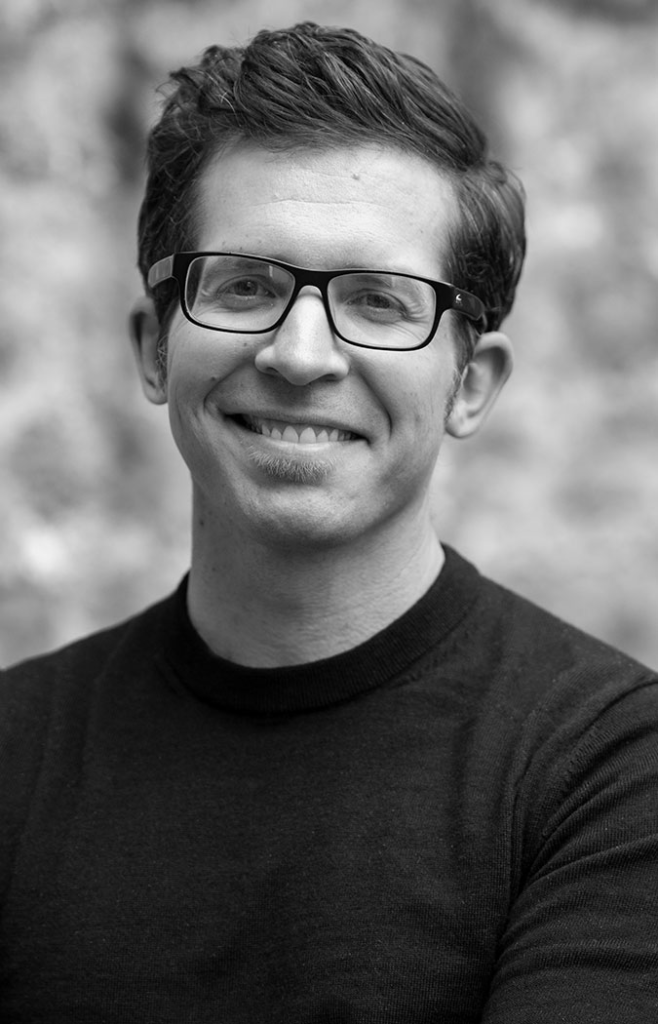
Winter in Ohio is often the time to bundle up, perhaps with a good book. But if you’re Wittenberg’s own English professor Andrew Graff, you’re escaping into the waters of summer 1993. And everyone is invited. All you have to do is pick up his second novel True North. After I stepped out of the fictional world of marriage rifts and white water rafting, I had the privilege of speaking to Graff about how this story came to be.
True North, which hit the shelves on January 16, follows Graff’s first novel Raft of Stars.
Although they tell separate stories, they both share one important theme: Graff’s love for the outdoors. True North follows a married couple, Sam and Swami, as they move their family from the big city of Chicago to a small town in Wisconsin. This ambitious move has two goals: take over the family white water rafting company, and hopefully repair their fractured marriage. For Graff, this project started as a desire to write about the woods of Wisconsin.
“That’s my childhood,” Graff tells me. “I grew up on the end of a dead-end road in a township of a village on an 80-acre farm, and I grew up about a bike ride away from that stretch of river, Piers Gorge.” Although True North takes place in a fictional county, the river was so important to Graff that he couldn’t imagine changing the name. “The rapids they go over in that book are the real names of rapids on that stretch of river where I grew up and I learned to white water raft,” he says. “It’s my favorite place on earth.”
True North manages to mix the complexities of marriage, rivers, conservation, white water rafting, and fatherhood into one novel. These are the pillars on which Graff’s life stands. But as he began writing, he noticed each aspect blending together and becoming metaphors for each other. “In the simplest sense, you know, calm water versus white water,” he says, and then he expands.
“One of the sayings in white water is ‘give up and square up.’ What it means is if you’re running sideways in a river raft, and you’re paddling like mad to get away from some major obstacle in your path, it becomes clear to you that you’re not going to avoid it. Then you have to give up, stop paddling away, and square up to it. Because you’ll hit it anyway. So it was fun to ask, what does it mean to give up and square up in marriage?”
Each of True North’s main characters has their fair share of squaring up to do. While they’re struggling with financial issues, job security, and raising their three children, Sam and Swami must learn how to work as a team, or decide if their relationship is worth it at all. “Sam had to learn to paddle with everything he had. Swami was the type who needed to learn how to yield, let go of her need to wrestle everything to the shape she wanted,” Graff says.
Despite the struggles the characters were enduring, it was important to Graff that there were no villains in their story. “It was my hope that you could root for and fault Sam, and you could root for and fault Swami,” he explains.
Reading True North, it’s obvious that both characters were written with care. That’s no surprise, considering the topics were so important to him. Both characters are parts of him, Graff confirms. He shares fears, hopes, and desires with his characters. And, of course, he shares the experience of going underwater on a raft. But it was also important that they lived outside of himself.
“I think it’s just a matter of trying to write their mind and heart,” he says. We know so much about Sam and Swami throughout the book, they feel as though they do exist beyond the pages. We learn about the consequences of Swami’s father’s dreams, and Sam’s experience with loss. After that, Graff simply had to ask his characters how their history and heart would make them react in each situation. “You just let them be their own people.”
His own experience with family and marriage certainly didn’t hurt, though. Marriage is difficult, that much he is sure of. It was important that he portrayed it that way. It’s painful to read the trials that plague them throughout the book. Every time you think they’re doing better, it’s ripped away from you. At the climax, Swami has packed the kids into the car and plans to disappear to California. As a reader, I thought all hope was lost. But even though the ending doesn’t see all their problems solved, it looks optimistic. This was done on purpose. “You can be on your way to California to do surf lessons on a dirt bike with a puppy,” Graff says, describing Sam’s final scene. “Life can be that good. But it doesn’t have to be.” He compares the happy ending we all hoped for to Hallmark movies, where everything is wrapped up with a neat bow. “Life’s not like that. So I didn’t want to have an ending that’s too tidy.”
But don’t worry too much about the fate of Sam and Swami. In Graff’s mind, they live happily ever after. “They’re gonna surf and be as free as birds,” he assures me. “They’re gonna go back and forth from Woodchuck to California in their camper. They’re gonna raise little sun-tanned kiddos who become raft guides. They’re happy.”
That’s good news for me, and for anyone who has had the pleasure of reading True North. If you haven’t yet, forget the spoilers, go pick up a copy, and start reading today!





